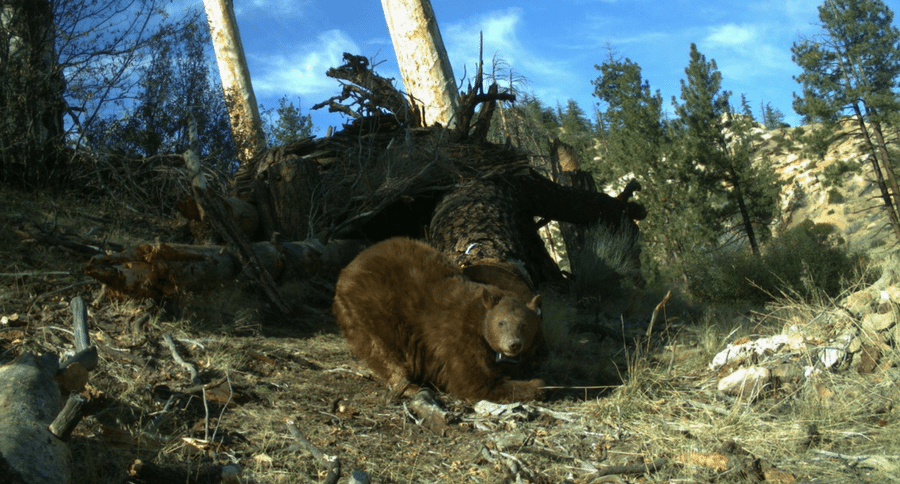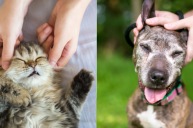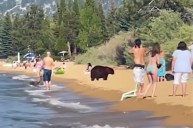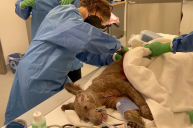Two California bears are readjusting to life in the wild a lot sooner than predicted.
The two female bears were trapped in the Thomas fire inferno that decimated parts of the Southern California back in December. They survived, but the hasty escape from their burning home led to third-degree burns on each of their paws. The burns were so bad, the bears' paw pads had begun to slough off, and they couldn't walk or stand due to the extreme pain.
When a wildlife conservation team from the California Department of Fish and Wildlife brought them in, chief of the Integrative Medicine Service at the UC Davis veterinary teaching hospital Jamie Peyton estimated it would take six months for the bears to heal. What she wasn't anticipating, however, was the use of a treatment never before attempted in the United States.
The conventional method of treating severe burns posed obvious problems for the bears. Keeping bandages over the injuries would be tricky, and administering pain medication would also be a challenge. When it was discovered that one of the females was pregnant, a speedy recovery became even more imperative. The veterinary team responsible for the bears' care turned to a new idea successfully being used in Brazil. It involved sewing tilapia skin over the burn patients' wounds and then covering everything with homemade bandages made from rice paper and corn husks. The same fish skin treatment was used on a mountain lion which also had burned paws.
Everything used on the bears came from nature, and it wouldn't hurt the animals if they became curious and decided to eat their tilapia bandages. The biggest benefit of using the fish skin was the natural healing properties. Tilapia fish skin has collagen proteins, which help heal burns and hasten recovery. Once the veterinary team had their plan, they went down to the local fish market to buy what they needed. They then sedated the bear burn victims and sutured the fish skin onto their paws. When the bears woke up, they were able to stand, and they didn't bother their bandaged paws.
https://www.facebook.com/CaliforniaDFW/photos/a.1616157498463711.1073741989.130403963705746/1616157638463697/?type=3&theater
After ten days, the tilapia skin treatment was taken off and replaced with fresh materials. The injuries showed signs of healing much faster than expected, and after only a few weeks, it was determined they were healed enough to go back home. It was important to get the pregnant bear back into the wild in time to give birth. A team from the wildlife agency chose an area in the Los Padres National Forest and built the two transplant residents their own dens.
https://www.facebook.com/CaliforniaDFW/photos/a.166663710079771.43210.130403963705746/1651134518299342/?type=3&theater
When the big day came, the bears were sedated one last time and carried into their new homes. When they woke up, their terrifying and painful experience in the California wildfires was well behind them. Scientists will keep track of the bears via GPS tags and cameras placed in the area. Their speedy and successful rehabilitation wouldn't have been possible without innovative veterinary science and a team of dedicated conservationists.
What do you think of the bear's tilapia treatment? Let us know in the comments.
WATCH NOW: Trouper the Raccoon Is Now a Wildlife Ambassador




